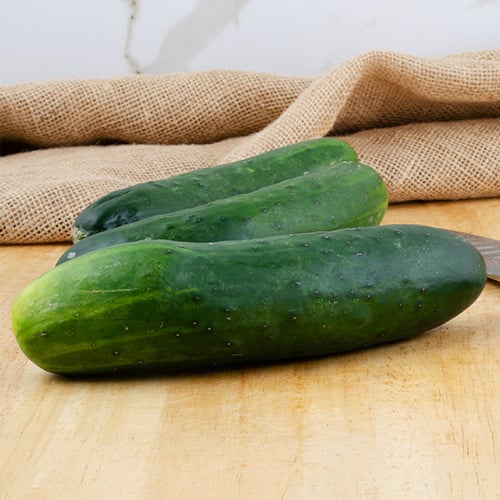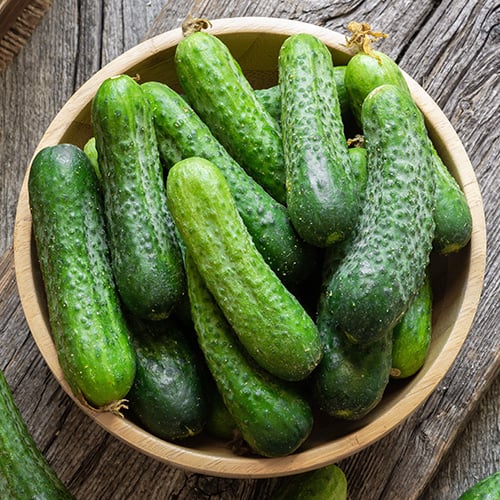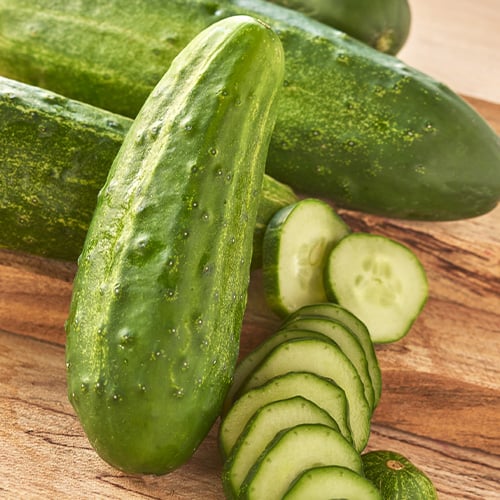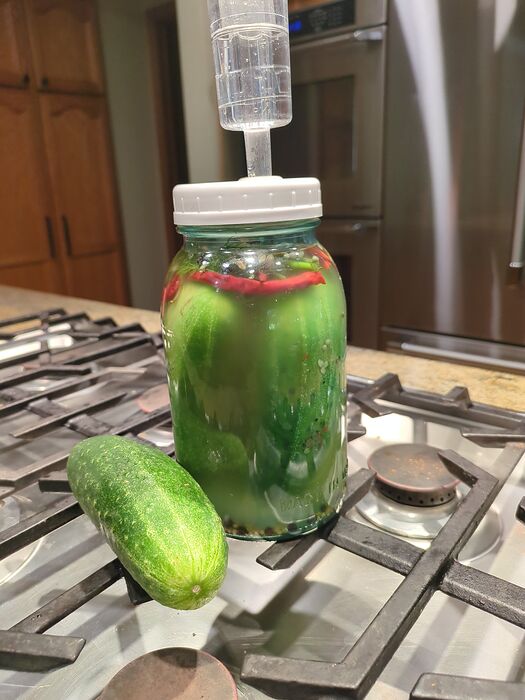My pleasure, John.
The “regular” cukes are also referred to as field cucumbers (at least here in Canada) - shorter stubby ones with thick skins and lots of seeds inside and the long skinny ones with not so many seeds are what we refer to as English cukes.
In the US of A, ‘regular’ cucumbers are frequently called slicing cucumbers. They’re the varieties that are relatively short and fat, with thick, waxy skins. I think some growers actually wax them to improve their shelf life.
Ah, yes. How could I forget the abundance of seeds? Too many, too large. Meh.
Hello Harters
When I go to the grocery I see a pile of fresh ('merican) cucumbers (with thick skins you must peel.) I don’t think they’re fat, they’re what I’ve always known-- maybe 1 1/2 inches diameter? The English cucumbers are skinny and long and wrapped tight in plastic wrap. Which made me avoid them. Now I see/think they are wrapped only because the skin is thin, and edible. The cukes I know (the American ones) are thick skinned–you have to peel these.
But once peeled they are cool crunchy very very pleasant vegetables–the seeds are not unchewable seeds bad seeds hard seeds like seeds in a lemon or an apple – they are soft little cucumber bits. I’ll gladly try the English cukes, I really wonder how different they are.
Let me qualify this by saying where I live (off the main transportation corridor), most store-bought cukes of any type are lousy: bitter, soft, musty, and IMO not worth buying unless desperate. They come from Mexico, mostly. Transportation issues being equal, I tried “English” hot-house cukes for a while, but found they never held up as long in the fridge as the “American” cukes, and I couldn’t justify the premium price. We’ve been far better off growing our own, and enjoying them while the season lasts. In a pinch, I’ll buy some early from local greenhouse growers, which seems to be a suitable option quality-wise.
I’d like to hear more about this!
This sort of captures what I see, if I shop around.
They let this one as “garden”

Too bad it doesn’t show the inside,
And pickling cukes, which are about the same size as Persian cukes, but not as straight, generally.
Speaking of which, we’re having a Middle Eastern feast with the family tonight. Most is coming delivery from the local Syrian restaurant but I’ve opened some jars of olives and pickles to nibble on alongside. Including some Lebanese pickled “wild cucumbers”. About as thick as your thumb and nearly twice as long. Nicely crunchy to go with the moutabal and muhammara.
I find a lot of ME pickles on the (too) salty side, even as a massive salt fiend.
But your dinner sounds lovely!
We’re ordering in the dips (except the tzatziki which I’ve made using mint from the garden), salads, kebabs, bread and a vegetable stew. Got figs and baklava for “afters”.
We’re having a Greek feast tonight with charcoal-grilled lamb chops & riblets, pilaf, horiatiki, melitsanosalata & tzatziki. No mint in my tzatziki.
I had a running argument about tzatziki with a second-gen Turkish American—mint or dill? She was repulsed by the idea of dill, and I don’t like mint.
Cacik often has mint in it, but tzatziki always has dill.
The article has pictures of both Gherkin and Kirby that I get say are commonly pickled.


They also have a picture of Persian, and describe them as similarly sized.
I got it from a Mexican market where it was labeled “pickling”.
ETA Now I’m not sure whether what I pickled yesterday.
Less than six inches but I know it’s not Persian.
Yup.
This actually just yoghurt and mint so probably not cacik or tzatziki. I’d hoped there would be leftovers to go with fruit for breakfast - but there isn’t.
Make more ![]()
Looks like a Kirby to me, but I would not bet large on it.


